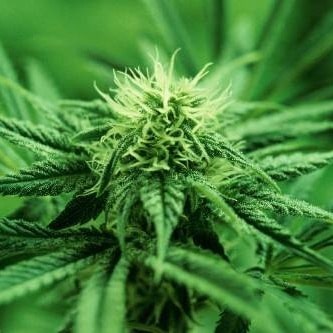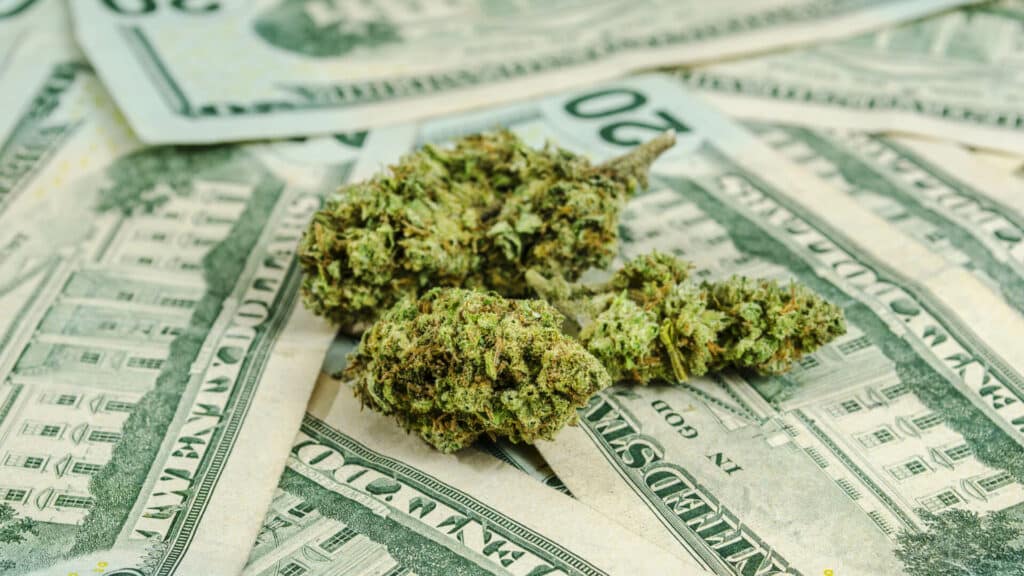Indicas will put you in a melty couch lock and Sativas will expand your headspace and boost your energy. The belief in the fundamental differences between Cannabis Indica and Cannabis Indica are so ingrained in weed culture that there has to be some truth to the matter, right? Even from initially glancing at the two plants, you can notice some obvious differences.
Indica Appearance
- Short
- Bushy
- Broad, Chunky Leaves
- 2-4 feet high
- Coloration tends to be more of an olive green
- Heavier buds
- Nugs appear much denser than sativa
Sativa Appearance
- Tall
- Thin
- Narrow, Pointy Leaves
- 6-20 feet high
- Coloration is more of a spring green
- Airier buds
- Nugs have an almost wispy appearance
Sativa vs Indica Feeling
Sativa strains are known for sparking uplifting and cerebral sensations. That is why I personally prefer to smoke a sativa heavy strain at parties, before a workout, or while completing a long list of chores.
A long hard rip of the sativa weed strains, Purple Haze or Mauwie Wauwie, is sure to make even the tallest mountain of dishes a thrill to scrub clean. Crank some of your favorite upbeat playlists for frequent dance breaks.
Other Common Effects
- Increased Alertness
- Euphoric Feelings
- Enhanced Creativity
- Boosted Energy
- Stimulated Appetite
- Relieves Symptoms of Depression
Indicas are thought to bring a notably sedative effect to users, which is why its most commonly remarked effect is the ‘couch lock,’ making it the ideal pairing for a movie night or as a nightly ritual for those who struggle with insomnia.
Just a couple puffs of the indica dominant weed strains, Northern Lights or White Widow, and you will find your bodily tension releasing along with an intense desire to zone into a relaxing Netflix binge.
Other Common Effects
- Deep Relaxation
- Pain Relief
- Reduces Anxiety
- Stimulated Appetite
- Sleep Aid
Is Indica or Sativa a Body High?
There is a general consensus amongst cannabis enthusiasts that Sativa bud is more likely to give you a more noticeable head high (greater cerebral stimulation) while Indica bud is more likely to impart a body high or physical buzz or even make you quite sleepy. This is why people generally consider indica to be nighttime weed and sativas to be daytime weed.
Does Indica or Sativa Make You Sleepy?
It is believed that indica cannabis can have a noticeably sedative effect on a person and make them drowsy. The effects of specific cannabis strains can be highly subjective and based upon the body chemistry of the individual, but it is far more common to hear people claim that indica strains are their preferred nightcap over sativas. There’s not a whole lot of science to back the validity of the claims that indicas make you sleepier than sativas, but it’s true that other factors, such as THC level, can make an impact on your circadian rhythms. Whether it be an indica or sativa, if your weed has a relatively high percentage of THC, this could increase the likelihood of insomnia or restless sleep.
Understanding Beyond Indica and Sativa
If you pay closer attention next time you get your hands on a particularly Indica dominant strain, you’ll certainly feel the body high coming on heavy. Similarly, powerful sativas will brighten the world around you with the stereotypical head high.
Since the rapid growth of regulated cannabis, it is much less common to find pure sativas or indicas. Just as Red Delicious and Granny Smith apples have been largely sidelined in favor of hybridized Honeycrisp and Gala apples, market demand for customized strains has resulted in highly prized AK-47 and White Widow hybrid strains, to name just a couple.
What is the Difference Between Indica, Sativa, and Hybrid Weed?
In many instances, a cannabis hybrid is the best of both worlds when it comes to the effects users experience from smoking it. There is a whole subset of the cannabis industry devoted to breeding together various sativa and indica plants to produce a sum total of all medicinal and enjoyable sensations cannabis enthusiasts love most: pain relief, anxiety reduction, and increased focus.
For this reason, it is quite possible in this day to blaze a sativa joint that ends up giving you a significant sedative effect, just as you can find indica dominant strains that electrify your senses. It really is not the easiest task to track down pure indica and sativa bud nowadays. The desire to create never-before-smoked designer cannabis strains is akin to Willy Wonka creating Ever-Lasting Gobstoppers and helium-infused Coke.
Other Factors That Contribute to Different Effects
Cannabinoids
The intricate effects achieved by smoking marijuana are direct results of the plant’s cannabinoids, particularly THC and CBD. Sometimes an extremely necessary distinction, strains with high levels of THC can be too much to handle for sensitive patients who feel overwhelmed by its effects. Consider that CBD, as well as lesser known cannabinoids like CBG and CBN and terpenes also play a significant role in producing the most notable effects of cannabis strains.
- THC
- Achieves anti-nauseant, analgesic, anti-anxiety, appetite stimulant, and sleep aid effects
- THC is psychoactive and contributes to the high users get from cannabis
- There tends to be a higher concentration of THC compared to CBD in Sativa dominant strains
- CBD
- Achieves anti-seizure, anti-depressant, anti-inflammatory, analgesic, and anti-psychotic effects
- CBD has been demonstrated as a powerful treatment for epilepsy, PTSD, and other crippling neurological disorders
- There tends to a be a higher concentration of CBD compared to THC in indica dominant strains
- Terpenes
- Terpenes are the compounds produced by Indica and Sativa plants alike that give off varying aromas of lemon or blueberry or straight-up skunk
- Different combinations of these terpenes are a significant indicator of whether a strain will have sleep-inducing or invigorating properties, so, it’s not simply a matter of indica versus sativa
- Produced in the plants’ trichromes and released in the resin of both indica and sativa cannabis plants
Don’t Discount the Terps
In recent years, more common ground has been reached on the subject of terpenes and their role in creating distinctive weed strains. It seems likely that the chemical composition of cannabis plants has at least as much to do with their associated effects as does their classification as indica or sativa.
The carefully curated array of terpenes present at the micro-level in cannabis plants plays an authoritative role in the distribution of properties, like sedation, pain relief, anti-inflammatory, antifungal, and stress reduction.
So, is There Really a Difference Between Indica and Sativa?
There most certainly is a difference between pure Indica and Sativa cannabis plants. But, as the years of cross-breeding stack up, the lines between the two main varieties of cannabis have become blurred.
As recreational and medical marijuana have become legalized in 34 states and the District of Columbia, you find enthusiasts becoming choosier about the type of cannabis products they consume. Can you blame them any more than a oenophile who insists on sipping Pinot over Cab.
In 2020, the world of cannabis consumption is increasingly customized: consumers and patients are able to research and pick out the strains that suit their needs the best, whether it be an Indica-dominant Gorilla Glue or Sativa-heavy Mimosa. As we grow to understand and experiment more with a focus on the ratios of the various THC, CBD, and terpene compounds, we should expect some truly futuristic chronic in the coming days.





